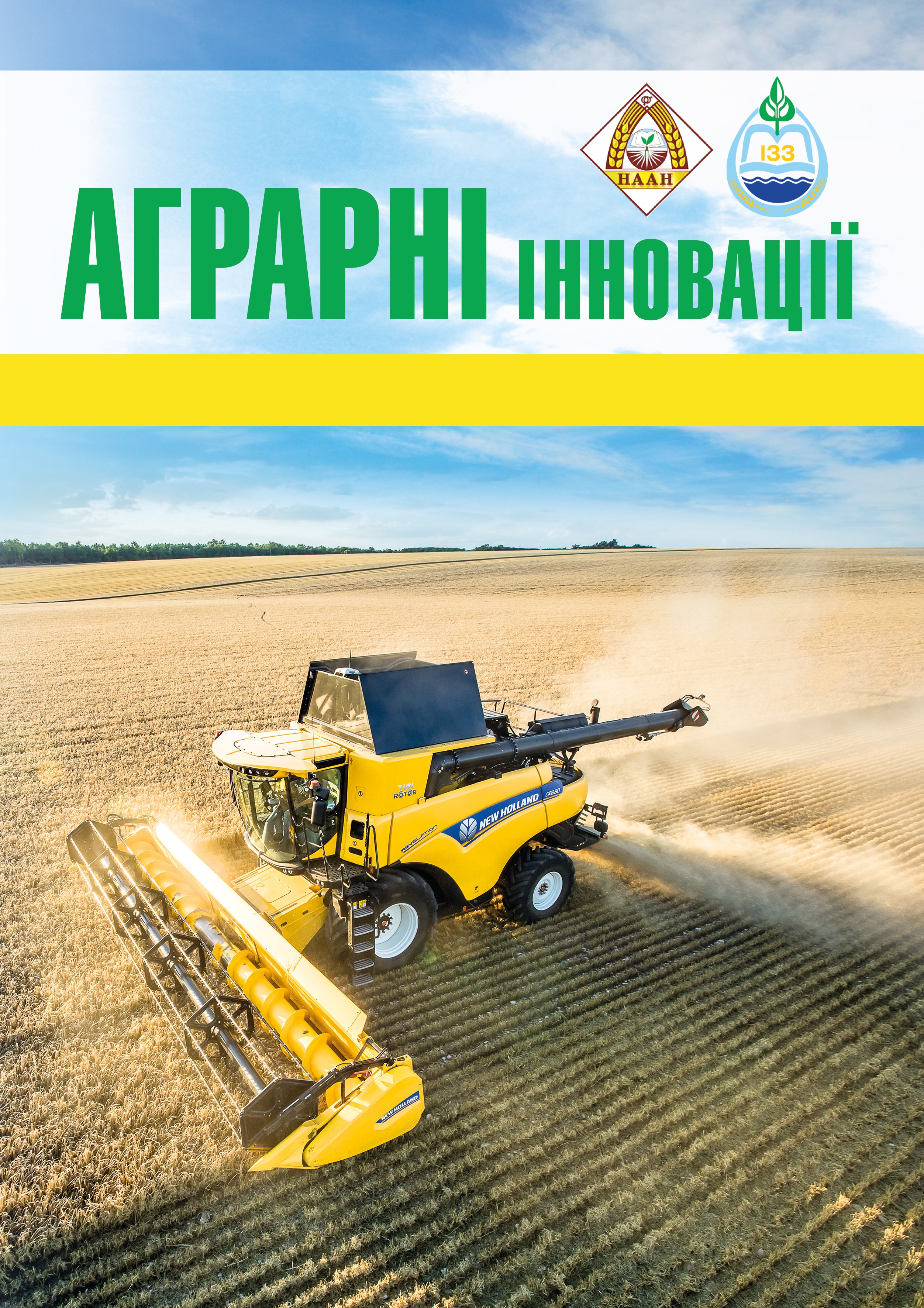AGRICULTURE OF THE SOUTHERN STEPPE OF UKRAINE: HISTORICAL DEVELOPMENT AND CURRENT STATE (1796–2019)
Abstract
Purpose. To analyze the historical development and current state of the agricultural sector of the south-ern Steppe of Ukraine and, according to its results, to establish conditions that contribute to the creation of agri-cultural landscapes that are resistant to regional climate changes. Methods. Functioning and increasing the effi-ciency of existing farming systems is determined based on analysis and synthesis, as well as abstract logical method. Empirical studies of intensive and landscape-ecological systems of agriculture were conducted using compara-tive, systematic and graphical analysis. Results. The way of transformation of old-age natural grasslands of the south-ern Steppe into anthropogenic agricultural landscapes is shown, which led to a significant change in the structure of land use in Ukraine. Due to a significant decrease in the acreage of forage crops in recent years, there has been an increase in the acreage of corn, sunflower, soybean and winter rape, that is, cereals and industrial crops that are in demand on the world market. Prerequisites that did not contribute to the intensive development of agriculture in the southern part of the Steppe zone at the end of the XX and early XXI centuries are associated with extremely high plowing of existing agricultural landscapes and their degradation. The return to no science-based farming sys-tems, while reducing the area of natural steppe landscapes, has led to the creation of an unstable state of agricultural lands. ern Steppe of Ukraine and, according to its results, to establish conditions that contribute to the creation of agri-cultural landscapes that are resistant to regional climate changes. Methods. Functioning and increasing the effi-ciency of existing farming systems is determined based on analysis and synthesis, as well as abstract logical method. Empirical studies of intensive and landscape-ecological systems of agriculture were conducted using compara-tive, systematic and graphical analysis. Results. The way of transformation of old-age natural grasslands of the south-ern Steppe into anthropogenic agricultural landscapes is shown, which led to a significant change in the structure of land use in Ukraine. Due to a significant decrease in the acreage of forage crops in recent years, there has been an increase in the acreage of corn, sunflower, soybean and winter rape, that is, cereals and industrial crops that are in demand on the world market. Prerequisites that did not contribute to the intensive development of agriculture in the southern part of the Steppe zone at the end of the XX and early XXI centuries are associated with extremely high plowing of existing agricultural landscapes and their degradation. The return to no science-based farming sys-tems, while reducing the area of natural steppe landscapes, has led to the creation of an unstable state of agricultural lands. This is also due to the negative impact of regional climate change. The systematic expansion of arable land was the beginning of a significant anthropogenic impact on existing agricultural landscapes. Therefore, the prerequi-sites created over the past two centuries for the intensive development of crop production, horticulture and vinicul-ture have led to the formation of anthropogenic agricul-tural landscapes. Conclusions. The main direction of sci-entific and economic activity of agricultural enterprises in the southern region should be to optimize the structure of sown areas with optimal participation of perennial grasses. This will help to strengthen the feed base for livestock, reduce the mineralization of humus in the soil and improve their physical and physic-chemical properties, first of all, a significant increase in the content of carbon and mineral and lighthydrolyzed nitrogen compounds and increase crop yields. Weather and climatic conditions of the Steppe zone indicate a significant instability of natu-ral moisture intake and the growth of evaporation and lack of moisture supply, especially in mid-dry and dry years with precipitation. Therefore, the development and imple-mentation of landscape and ecological farming systems in the southern region will contribute to ensuring food security in Ukraine.×
References
2. Розподіл земельних угідь степової зони України в XVIII–XIX століттях [Електронний ресурс] Режим доступу: www.forestforum.ru/info/history/tchvet2.pdf (дата звернення 19.05.2020 р.)
3. Казьмір П. Г., Стойко Н. С., Дроздяк М. В. та ін. Організація сільськогосподарського використання земель на ландшафтно-екологічній основі. Львів : ЛНАУ, 2009. 247 с.
4. Комплексна галузева програма “Розвиток зер-новиробництва в Україні до 2015 року” [Електронний ресурс] Режим доступу: http://www.agro-business.com. ua/component/content/article/878.html?ed=55 (дата звер-нення 23.01.2020 р.)
5. Основні економічні показники виробництва про-дукції сільського господарства в сільгосппідприємствах за 2011 рік. Статистичний бюлетень. Київ : Державна служба статистики України, 2012. 88 с.
6. Державна служба статистики України у цифрах за 2016 рік. Статистичний збірник. Сільське госпо-дарство. Київ, 2017. С. 127–155.
7. Балюк С. А., Медведєв В. В., Тараріко О. Г. та ін. Національна доповідь “Про стан родючості ґрунтів України”. Посібник українського хлібороба. Київ, 2011. С. 41–69.
8. Трофимов И. А., Трофимова Л. С. Повышение устойчивости агроландшафтов к засухам и эрозии. Поволжский экологический журнал. 2002. № 3. С. 277–287.
9. FAO Statistical Yearbook 2012: World food and agriculture. Edited by A. Prakash and M. Stigler. Pp. 320–322.
10. Структура, динаміка та розподіл земельного фонду України (за станом на 01.01.2012 р.). Державне агентство земельних ресурсів України. Київ, 2012. 110 с.
11. Докучаев В. В. Наши степи прежде и теперь. Москва ; Ленинград : ОГИЗ – Сельхозгиз, 1936. 117 с.
12. Иванов Н. Н. Показатель биологической эффек-тивности климата. Известия Всесоюзного географиче-ского общества. 1962. Т. 94. Вып. 1. С. 65–70.






